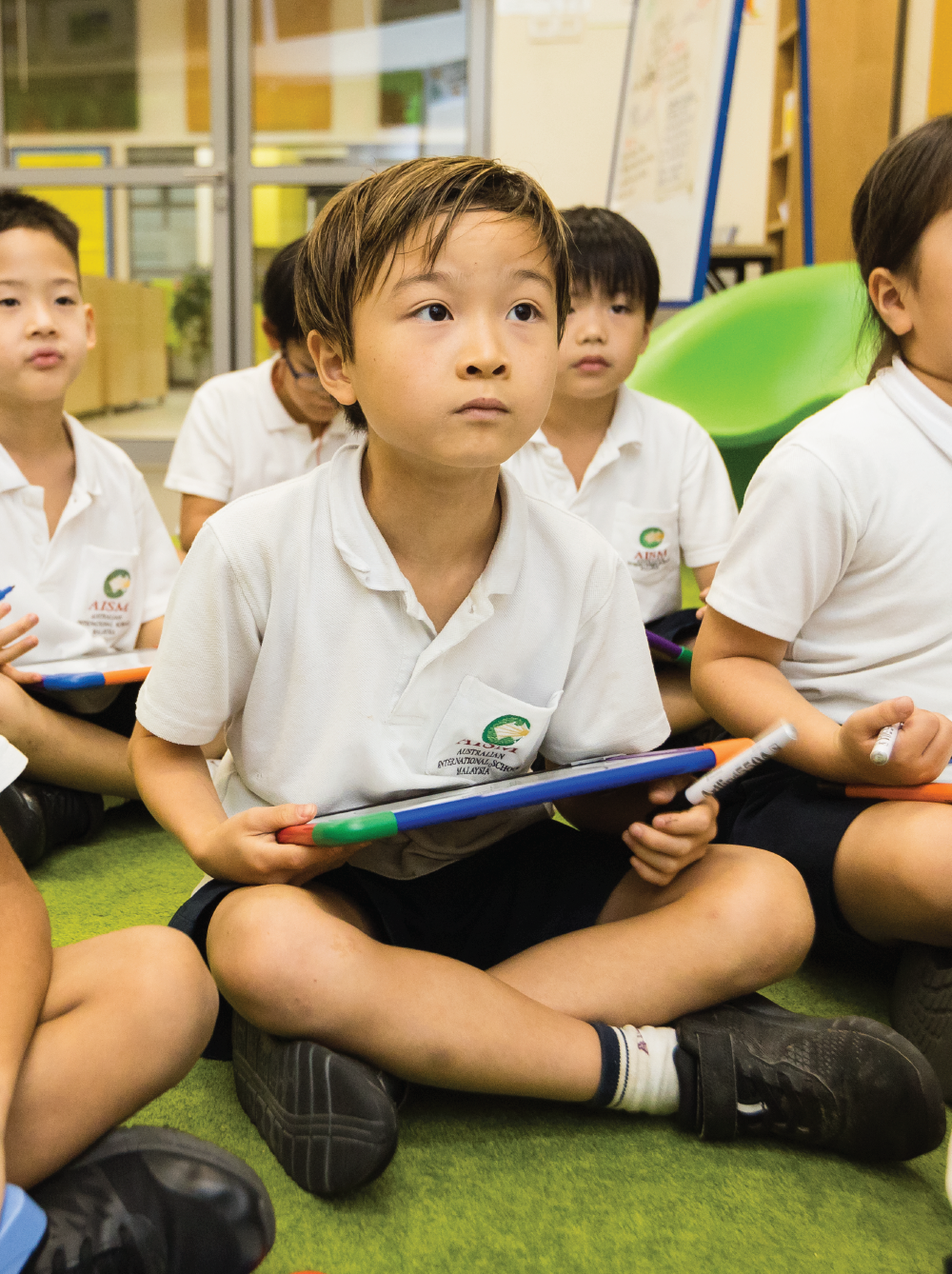WHO WE ARE
A Robust
Curriculum
At AISM, we follow the principles of Visible Learning to teach our learners the tools of success. The cornerstone of our work is based on the Australian National Curriculum, internationally known for its academic breadth and rigour, while meeting Australian and international standards.
We aim to build numerate and literate youngsters, who are critical and creative thinkers, determined to deal with others respectfully and ethnically.
Why Choose Our Junior School
We balance the rigorous Australian curriculum with stimulating, fun and investigate learning experiences.

Develop Creativity &
Critical Thinking Skills
We teach students how to use Visible Thinking Routines in their daily work, to encourage the use of different thinking skills to help students think out of the box. Some of the thinking strategies used include Think-Pair-Share, See-Think-Wonder and more.

Foster Independent
Learning
The Visible Learning approach teaches students “how to learn”. Students understand the value of having clear goals and expectations, seek feedback from others to improve and know exactly what they need to do to achieve success. Students take control of their own learning.

Cultivate Collaborative
Learning Skills
Our open spaces and break out areas encourage students to work collaboratively, developing the collaborative and social skills critical for their future success.
Our Junior
School Structure
From Year 1, each year level has their own highly trained and
qualified assistant teacher, which enables rich teaching opportunities
under the guidance of our expatriate staff.
Our class sizes allow flexibility and dynamism in our differentiation
for learners of all dispositions.
Early Learning Centre (ELC)
3 to 5-year olds
Lower Junior School
6 to 8-year olds
Upper Junior School
9 to 11-year olds
Junior School Subject
English
The aim of English is to enable students to understand and use language effectively while appreciating the language, make meaning in ways that are imaginative, creative, interpretive, critical and powerful.
Students learn about language through
- activities involving speaking and listening
- reading and writing as well as viewing and representing
- working with a wide range of print, spoken, visual media, multimedia and digital texts
- the creation of written and digital texts
- the delivery of formal and informal presentations

Mathematics
Students become confident, creative users and communicators of mathematics, able to investigate, represent and interpret situations in their personal and work lives and as active citizens.
Students develop their mathematical knowledge, skills and understanding through a range of learning experiences across:

Science & Technology
The aim of Science and Technology is to foster in students a sense of wonder and to expand their natural curiosity about the world.
Students develop their skills by Working Scientifically and Working Technologically to answer questions and solve problems vital to the world.
They develop their curiosity and understanding about the Environment by learning about the Physical World, Earth and Space, the Living World, the Material World, Built Environments, Information and Products.

History
Students enjoy exploring historical places, people and events. In doing so, they develop a critical understanding of the past and its impact on the present.
Students investigate:
- historical concepts
- historical events from a different angle
- skills using historical sources

Geography
Through geographical inquiry, students develop an understanding of the interactions between people, places and environments.
Students explore geographical concepts such as places and sustainability, through real-world examples and issues.
Students develop global awareness to become active citizens.

Performing Arts
Creative and Performing Arts enables students to increase their understanding and accomplishments in the arts, appreciate the meaning and value of artforms and to view artworks as forms of communication.
- Visual Arts
- Music
- Drama
- Dance

Physical Education
In physical education, students develop the knowledge and understanding, skills and values to lead healthy, active and fulfilling lives.
- Active Lifestyle
- Dance
- Games and Sports
- Growth and Development
- Gymnastics
- Interpersonal Relationships
- Personal Health Choices
- Safe Living

Languages Other Than English (LOTE)
The aim of teaching languages is to enable students to develop communication skills, focus on languages as systems and gain insights into the relationship between language and culture.
Students in the Junior School have the choice to study:
- Bahasa Malaysia
- Mandarin
All Junior School students study the Malaysian Language, Culture, Geography and History.

Assessment
At AISM, we use assessments to help us focus on the gaps - and how to close them. A range of formative and summative tests are provided, benchmarked against international standards through the International Schools Assessment (ISA), used by 90,000 students and 400 schools worldwide.
Formative Assessment
Your child will undertake standardised diagnostic assessments to help identify their current level of understanding.
Ongoing Assessment
We close the gaps identified through the formative assessment. The learning and assessment cycle continues through observation, projects, assignments, tests, quizzes and presentations.
Summative Assessment
Class-based assessments will be conducted throughout the year. External examinations include the International Schools Assessment (Years 3 to 10). Standardised diagnostic assessments are completed twice per year to gauge individual academic growth.



